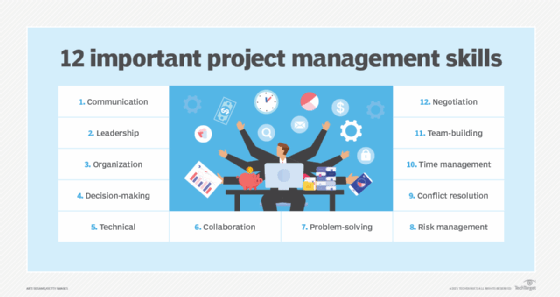negative float (negative slack)
What is negative float (negative slack)?
Negative float, also known as negative slack, is a common concept in project management that refers to the amount of time that must be saved to complete a project on time. Another way of looking at negative float is the time beyond the scheduled completion date that a project or activity requires to achieve completion.
Float and negative float explained
In any project, float or slack is the amount of time a task can be delayed without endangering the project deadline for its overall completion. It's calculated by subtracting the time required to perform a task or activity from the time available to perform it. It's important to calculate float time when creating a project schedule as the information can guide scheduling decisions, especially when resource contention or constraints may affect the project.
Float can be a positive or negative number. Tasks on the critical path will have zero float, while tasks on the noncritical path usually have a positive float. If an activity has a negative float, it almost always means a constraint on the critical path is affecting the activity's scheduled delivery date so it won't start or finish in time.

Negative float and critical path
A project's critical path refers to the longest sequence of tasks or activities that must be achieved to complete the project. For this reason, tasks on the critical path are called critical activities. Mapping the critical path is necessary to find the amount of float or slack in the project and will help to:
- create project schedules;
- prioritize tasks based on their float time;
- allocate resources to the project; and
- identify critical tasks that have no float and take steps to ensure they're completed on time.
Because tasks on the critical path can't be delayed, they have zero float. A delay in one or more of these activities will result in the entire project being delayed. In other words, tasks that can float -- postponed without delaying the overall project scope -- can't be on the critical path.
Negative float or slack occurs when an activity on the critical path is behind schedule. It usually appears because a task's start date is set earlier than the end date for a preceding task in the critical path. Thus, it usually indicates a missed date somewhere along the critical path, which itself may be due to some constraint on the path.
Each task on the critical path must be completed before the next one can start. That's why it usually becomes necessary to find unused float elsewhere in the project plan to make up for negative float and thus prevent the project from being delayed.
Negative float, start times and finish times
Each activity in every project has a start time and an end time. Project managers typically define two types of start and finish times for each activity:
- Earliest start time (ES) is the earliest an activity can start after previous dependent activities are over.
- Earliest finish time (EF) is the sum of the earliest start time and actual activity duration.
- Latest finish time (LF) is the latest an activity can finish without delaying the project.
- Latest start time (LS) is the sum of the latest finish time and actual activity duration.
Activity float can be calculated if the start or finish times are known. The two most common formulae to calculate float are:
- Float = LS – ES
- Float = LF – EF
If the float is positive, it indicates some flexibility is available; delaying a specific activity therefore won't delay the project's overall completion time. However, if the float is negative -- meaning less than less than zero -- some intrinsic delay is present because the task either didn't start on time or finish on time to meet one or more critical dates in the project schedule.
Causes of negative float
One of the most common causes of negative float is the introduction of constraints in the schedule that can't be met. Consider a project schedule where each of the first three activities has some total float because a constraint is placed on the third activity. The float exists because the finish-on date is later than the currently scheduled finish date for the third activity. If activities 1 and 2 start to slip after the project starts, however, they will use up all their float.
Once the float drops to zero, all three activities will become critical. If they continue to slip, the activities will become supercritical. At that point, the finish-on constraint on the third activity will be exceeded. Because the constraint locks the late finish date, the float will become negative, meaning there are now zero days left to finish the work.
Apart from the must finish by constraint, other causes of negative float include:
- External relationships to other projects wherein a milestone is constrained by a finish on or before constraint.
- The improper use of calendars, especially if a milestone is defined as a finish milestone. This causes the late date of an activity to be earlier than its early date and results in a negative float.
Regardless of the cause, negative float provides an early warning indicator that an activity may fail to meet its scheduled delivery date.

Negative float before and after a project starts
A good practice during scheduling is to check that negative float doesn't appear in the primary baseline before the project starts. If negative float does appear this early, it indicates the project team is planning to miss a deadline even before they start working. This indicates an attitude of planning to fail, which rarely results in a successful project.
Such an approach is neither realistic nor beneficial to the project. Negative float should only occur in a project schedule after work has commenced and when progress reporting has started. It's also useful to check for negative float before baselining the plan, especially if the schedule includes hard constraints.
See also: IT project management, IT project manager, project management framework, Agile Project Management, Project Management Professional, project charter, Certified Associate in Project Management, project scope
